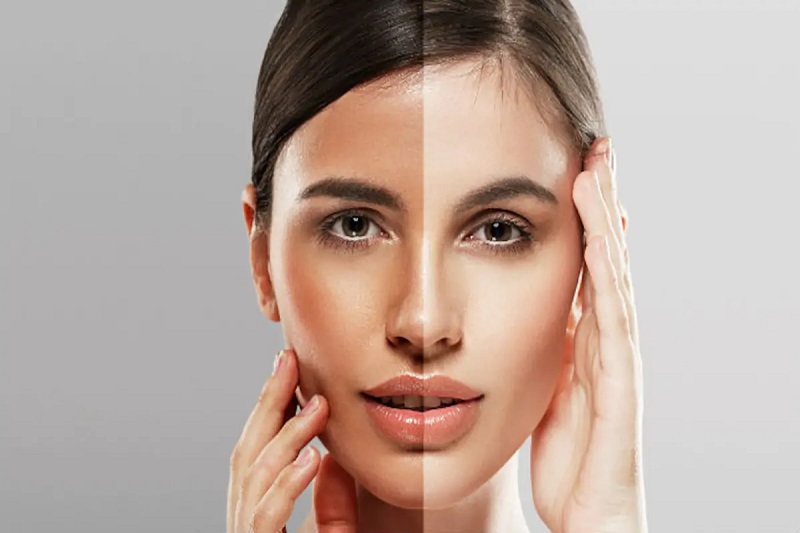Skin Whitening Secrets You Should Try

In today’s society, having fair skin has unconsciously become the ideal of beauty. With many whitening products claiming to produce significant effects in several days, how could you be a wise consumer and guarantee that a product includes the proper components to deliver on its promises over time?
Although most cosmetic products ought to be safe, skin bleaching components do not have the most outstanding safety record in history. When purchasing whitening products, one of the essential things to remember is to look at the ingredients. Because the pigments in the skin have defensive capabilities, you must ensure that the whitening effect is not the byproduct of a more significant issue.
Here are some of the most often encountered substances in skin whitening solutions, as well as their impact on your skin
Hydroquinone
Hydroquinone was a preferred skin-lightening agent back in the day. Combining hydroquinone with a steroid cream and tretinoin has higher effectiveness than a single component. Although it is thought to be safe, there could be adverse effects, and it is subject to pre-market clearance by the Health Sciences Authority.
Glutathione
This constituent is most renowned for its ability to whiten your skin while also lowering melanin levels. Even though it is one of the most effective antioxidants of all time, many people are unaware of its existence.
It has been utilized extensively in skin therapies and treatments by doctors and dermatologists worldwide. Most of the time, it is employed in producing cosmetics or pills for human consumption. However, experts highly recommend glutathione lotion, as this preparation provides more coverage on your skin. You can acquire them at your local dispensary or make your purchase online.
Kojic Acid
Kojic acid is a natural whitening and glowing skincare ingredient often produced as a byproduct of malted rice, used to manufacture rice wines. Kojic acid acts to bleach and revitalize your skin by blocking an enzyme required for melanin formation, the pigment that gives your skin its color.
However, only a tiny percentage of kojic acid concentration is suitable for applications in skincare products since higher concentrations might cause over-drying and irritation.
Niacinamide
This component is a compound of Vitamin B3 and is a more absorbent version of this vitamin than niacin. Natural sources of niacinamide include green vegetables, barley, whole wheat, beans, salmon, eggs, and pork. Niacinamide is also found in chemically made oral supplements and cosmetic products.
It is a prominent skincare component with anti-aging benefits and the potential to treat skin discoloration. The prolonged application has been demonstrated to eliminate age spots and increase skin brightness drastically.
Alpha Arbutin
Alpha Arbutin is a crystalline white powdered bio-synthetic substance derived from the Bearberry shrub. Arbutin is found in two forms: alpha and beta. Compared to the beta version, the alpha is a purer variant of arbutin with more excellent stability and efficacy.
Alpha arbutin lightens the skin by lowering tyrosinase activity, a key element in melanin synthesis. It also aids in the reduction of skin darkening caused by UV exposure.
Deionized Water
Deionized water, often known as purified water, is the recommended form of water for producing beauty products. Manufacturers have deionized water by filtering tap water through a sequence of filtration that removes mineral ions in the liquid, such as sodium, magnesium, and fluoride, which cause water to be purified. The removed mineral salts are then exchanged with hydrogen ions to reduce the hardness of the water.
This chemical is more often found in teeth-whitening treatments than in skin-whitening products since it has a minor lightening impact on your skin.
Beeswax
Often known as Cera alba, beeswax is a naturally occurring bee product. Bees make beeswax by turning the nectar they collect from plants into a wax and honey combination. Cosmetic-grade Cera alba is created by purifying beeswax.
Cera alba is a valuable and adaptable substance that may be used for a wide range of applications. Because it is made organically, it does not clog the pores like manufactured paraffin wax. It also acts as an emulsifier and helps extend its shelf life.
Today, many people would make considerable efforts to avoid the sunlight, use pricey products, masks, and professional treatments to maintain or improve their fair complexions. Because the cosmetic industry is flooded with whitening solutions, it’s essential to understand the components and what each can do for your skin.
It is crucial to comprehend both the advantages and the drawbacks to arrive at educated decisions. Because your skin is a vital component of your body, you should do your part in finding the best possible products for your benefit.